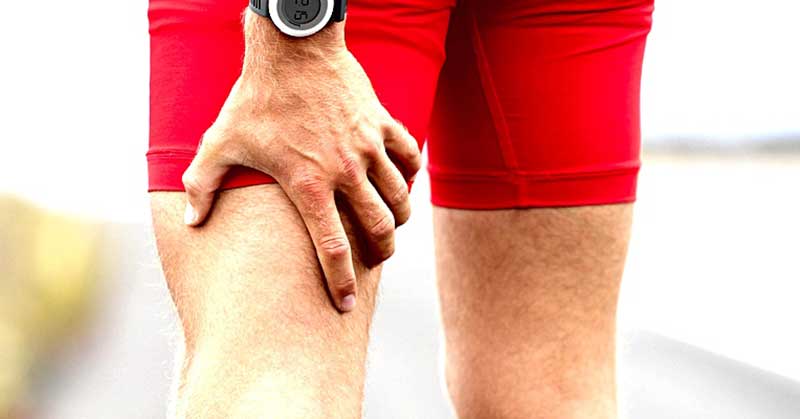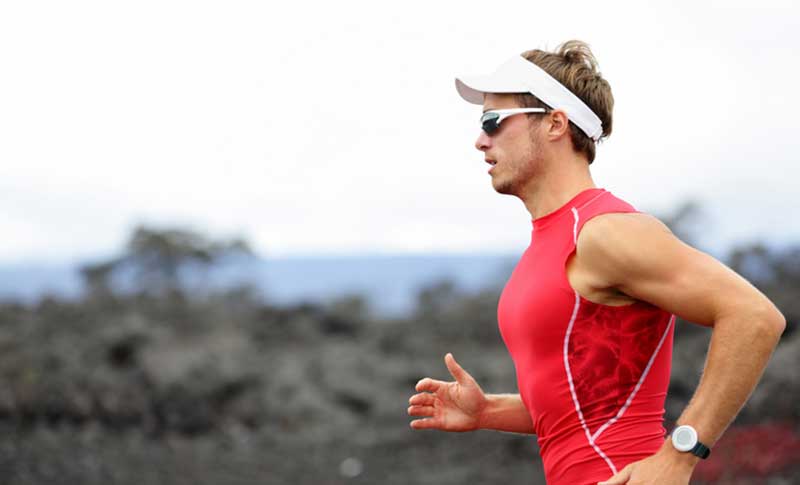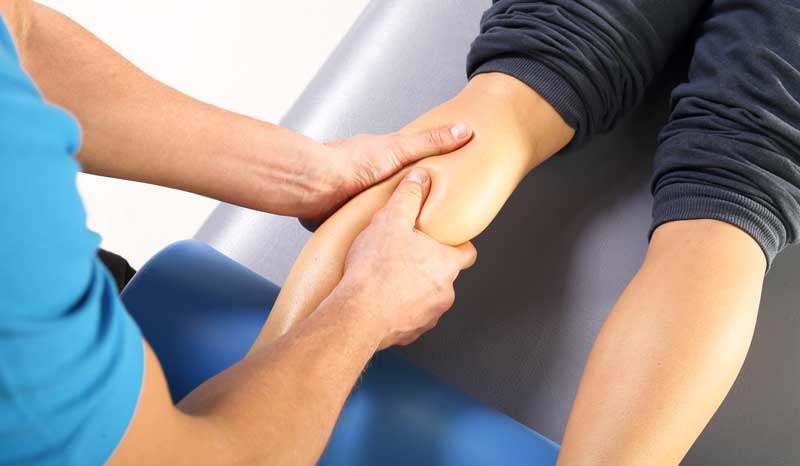[mashshare]

A cramp is a nightmare for athletes. The slow sensation of a muscle gradually getting tighter or the short sharp pain that comes with a powerful cramp are well known to many who exercise. During my sporting career, I often suffered from cramps and on more than one occasion had to pull out of a race while on the start line due to cramping. At every competition, I worried about suffering from cramps, and I always tried to take steps to prevent them.
Many people believe they know what know what causes cramps. The most common theory attributes cramping to dehydration and electrolyte imbalance. Sports drinks companies have made fortunes off the back of this theory; they can sell fluid and electrolytes in one nice package to athletes, preying on their fear of the dreaded cramp. But do dehydration and a lack of electrolytes actually cause cramps? Probably not.
Muscle Cramps: The Misconceptions About Dehydration
Several research studies have debunked the relationship between dehydration and cramps. One study published in 1986 followed 82 male marathon runners during a 42k race. Fifteen of these runners cramped. The researcher, Ron Maughan, compared these athletes against those who didn’t cramp and discovered no differences between the groups regarding electrolyte concentrations. There was also no difference in plasma volume–a marker of dehydration–between the two groups.
A more recent study, this time from 2011, looked at triathletes competing in an Ironman. Out of 210 triathletes recruited, 43 suffered from cramps. Again, there were no differences in electrolyte loss or body weight changes (another dehydration marker) between athletes who suffered from cramps and those who didn’t.

If you’ve ever cramped during exercise, you might see the logic to this. I always got cramps in my calves. If dehydration or an electrolyte imbalance caused the cramps, why did this affect only one muscle group? It would make far more sense for the cramp to occur in various muscle groups, each of which would likely be affected by dehydration. And consuming greater amounts of fluid would prevent cramping. But the research consistently shows that it doesn’t.
Muscle Cramps and Neuromuscular Fatigue
There were a few differences, however, between the triathletes and the marathon runners. In the Ironman study, faster race times and a previous history of cramping were associated with an increased risk of cramps. With the marathon runners, cramps tended to occur toward the end of the race, when fatigue was high. This indicates that something else is causing the increase in fatigue apart from dehydration and electrolyte imbalance.
With this information, we can start to understand the real cause cramping. If the calves are the muscle group most predisposed to cramps, why might this be? The lower leg has plenty of small intrinsic muscles that help support the foot. These muscles are often relatively weak, especially compared to the larger gastrocnemius and soleus muscles. This causes them to fatigue quicker than the large muscles, increasing the load on the gastrocnemius and soleus, which causes these two muscles to fatigue quickly.
Could fatigue-especially neuromuscular fatigue-be the cause of cramps (or at least one cause)? It seems likely. Returning to our Ironman runners, remember the faster runners were more likely to cramp than slower runners. It’s logical to suggest that faster runners push themselves to a greater extent and are more likely to operate in an area of fatigue. In the marathon study, the runners got cramps late in the race when fatigue levels would have been high.
The altered neuromuscular control/neuromuscular fatigue theory of cramping is now seen as the most likely cause of cramps rather than the dehydration and electrolyte imbalance/depletion hypothesis.
Additional risk factors for cramping include:
- Being taller and heavier which likely increases the load on the muscles, thus increasing fatigue.
- A history of tendon and ligament injuries, which can again predispose one to increased fatigue level.
- Having had a cramp previously increases your risk of suffering from cramps again. This suggests that certain athletes are predisposed to suffering from cramps.
- Some studies also suggest that exercise associated cramps can run in families; if your relatives suffer from cramps, then your risk is higher. This indicates a possible genetic component to developing cramps during exercise.
- So far variation in two genes, COL5A1 and AMPD1, has been linked to exercise associated cramps. Neither of these genes appears to alter dehydration or electrolyte balance. But they can modify running economy and fatigue, lending greater weight to the increased neuromuscular fatigue hypothesis.
Managing and Preventing Muscle Cramps
If neuromuscular fatigue causes cramping, then we need to try and avoid fatigue from occurring.
- Carbohydrates. Consuming carbohydrates during prolonged exercise bouts should help offset some of the fatigue. Examples of prolonged exercise include long running sessions and events as well as team sport matches.

- Targeted Strength Training. If there’s a particular muscle or muscle group which is predisposed to cramping, we can target this muscle with specific strength exercises. For example, if the calf muscles are predisposed to cramps, then we can make the larger muscles (gastrocnemius and soleus) more fatigue-resistant through straight- and bent-leg calf raises. We can work the intrinsic muscles through barefoot and sand-based running drills. We can try to improve fatigue resistance by increasing strength (i.e. lower reps, higher load) and endurance (i.e. higher reps, increased load).
- Compression Garments. It might be useful to wear compression garments. Again, if the calf is predisposed to cramping, wearing compression socks might help. The evidence here is mixed. Some papers indicate that compression garments might reduce fatigue, others say they have no effect. To date, however, no paper has suggested that compression garments increase fatigue.
While the evidence suggests that dehydration and loss of electrolytes likely don’t cause the cramps, there appears to be little harm in consuming sensible amounts of fluid and electrolytes during exercise. I don’t particularly believe this will prevent cramps, but dehydration might harm performance in other ways.
Emerging Science to Stop Cramps
Based on the research findings that fatigue causes cramps in either (or both) the nerve and the muscle, a team of scientists led by a Nobel Prize winner has created a product called HotShot. The research trials showed that consuming the supplement led to a decrease in exercise associated cramping by over 50%.
The supplement has a strong taste that stimulates neurons in the mouth and stomach, altering the transmission of nerve impulses from the spine to the muscle which potentially causes cramps. The supplement does not target dehydration or electrolyte replacement. If this supplementation is effective–there are no third-party studies examining this–it’s a further nail in the coffin for the dehydration causes cramp theory.
Since you’re here…
…we have a small favor to ask. More people are reading SimpliFaster than ever, and each week we bring you compelling content from coaches, sport scientists, and physiotherapists who are devoted to building better athletes. Please take a moment to share the articles on social media, engage the authors with questions and comments below, and link to articles when appropriate if you have a blog or participate on forums of related topics. — SF
[mashshare]




